
Herman Boerhaave was a Dutch botanist, chemist, Christian humanist, and physician of European fame. He is regarded as the founder of clinical teaching and of the modern academic hospital and is sometimes referred to as "the father of physiology," along with Venetian physician Santorio Santorio (1561–1636). Boerhaave introduced the quantitative approach into medicine, along with his pupil Albrecht von Haller (1708–1777) and is best known for demonstrating the relation of symptoms to lesions. He was the first to isolate the chemical urea from urine. He was the first physician to put thermometer measurements to clinical practice. His motto was Simplex sigillum veri: 'Simplicity is the sign of the truth'. He is often hailed as the "Dutch Hippocrates".

Leiden is a city and municipality in the province of South Holland, Netherlands. The municipality of Leiden had a population of 123,856 in August 2017, but the city forms one densely connected agglomeration with its suburbs Oegstgeest, Leiderdorp, Voorschoten and Zoeterwoude with 206,647 inhabitants. The Netherlands Central Bureau of Statistics (CBS) further includes Katwijk in the agglomeration which makes the total population of the Leiden urban agglomeration 270,879, and in the larger Leiden urban area also Teylingen, Noordwijk, and Noordwijkerhout are included with in total 348,868 inhabitants. Leiden is located on the Oude Rijn, at a distance of some 20 kilometres from The Hague to its south and some 40 km (25 mi) from Amsterdam to its north. The recreational area of the Kaag Lakes (Kagerplassen) lies just to the northeast of Leiden.
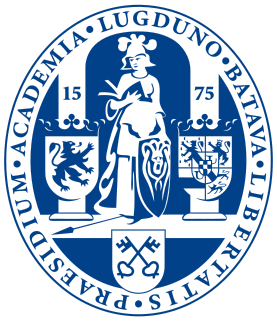
Leiden University is a public research university in Leiden, Netherlands. Founded in 1575 by William, Prince of Orange as a reward to the town of Leiden for its defense against Spanish attacks during the Eighty Years' War, it is the oldest institution of higher education in the Netherlands.
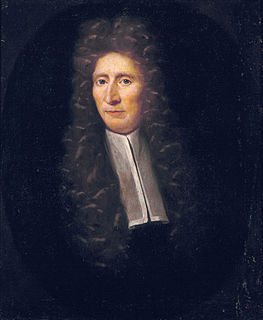
Frederik Ruysch was a Dutch botanist and anatomist. He is known for developing techniques for preserving anatomical specimens, which he used to create dioramas or scenes incorporating human parts. His anatomical preparations included over 2,000 anatomical, pathological, zoological, and botanical specimens, which were preserved by either drying or embalming. Ruysch is also known for his proof of valves in the lymphatic system, the vomeronasal organ in snakes, and arteria centralis oculi. He was the first to describe the disease that is today known as Hirschsprung's disease, as well as several pathological conditions, including intracranial teratoma, enchondromatosis, and Majewski syndrome.
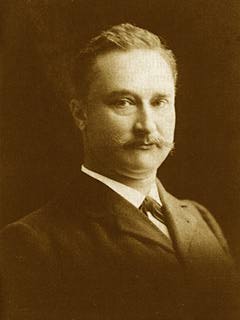
Marie Eugène François Thomas Dubois was a Dutch paleoanthropologist and geologist. He earned worldwide fame for his discovery of Pithecanthropus erectus, or "Java Man". Although hominid fossils had been found and studied before, Dubois was the first anthropologist to embark upon a purposeful search for them.
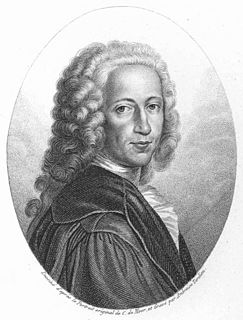
Bernhard Siegfried Albinus was a German-born Dutch anatomist.

Cabinets of curiosities were collections of notable objects. The term cabinet originally described a room rather than a piece of furniture. Modern terminology would categorize the objects included as belonging to natural history, geology, ethnography, archaeology, religious or historical relics, works of art, and antiquities. The classic cabinet of curiosities emerged in the sixteenth century, although more rudimentary collections had existed earlier. In addition to the most famous and best documented cabinets of rulers and aristocrats, members of the merchant class and early practitioners of science in Europe formed collections that were precursors to museums.

An anatomical theatre was an institution used in teaching anatomy at early modern universities.
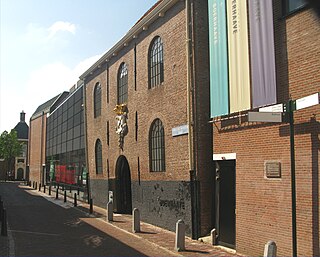
Rijksmuseum Boerhaave is a museum of the history of science and medicine, based in Leiden, Netherlands. The museum hosts a collection of historical scientific instruments from all disciplines, but mainly from medicine, physics, and astronomy.

Naturalis Biodiversity Center is a national museum of natural history and a research center on biodiversity in Leiden, Netherlands. The museum, except the research facilities, was closed from September 2018 to mid 2019 due to renovations. Temporary exhibitions were held in the Pesthuis entrance building during the renovations.
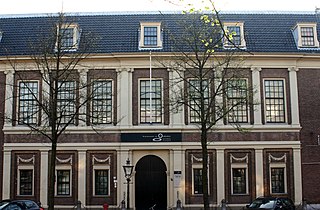
The Rijksmuseum van Oudheden is the national archaeological museum of the Netherlands, located in Leiden. It grew out of the collection of Leiden University and still closely co-operates with its Faculty of Archaeology. The museum calls itself "the national centre for archaeology" and focuses on ancient Egypt, the ancient Near East, the classical world of Greece, Etruria and Rome and the early Netherlands.

Gustavianum is the oldest standing building of Uppsala University. It was built between 1622 and 1625, and used as the main building of the university between 1778 and 1887. Since 1997 it is used as the university museum of Uppsala University.

Govert Bidloo or Govard Bidloo was a Dutch Golden Age physician, anatomist, poet and playwright. He was the personal physician of William III of Orange-Nassau, Dutch stadholder and King of England, Scotland and Ireland.

The National Museum of Ethnology, is an ethnographic museum in the Netherlands located in the university city of Leiden. As of 2014, the museum, along with the Tropenmuseum in Amsterdam, and the Africa Museum in Berg en Dal, together make up the National Museum of World Cultures.

Pierre Lyonnet or Lyonet was an artist and engraver who became a naturalist. He was a collector both of shells and paintings, whose collection included Woman Reading a Letter by Vermeer, now in the Rijksmuseum. This fetched far less than his best shells in the auctions of his collection after his death.
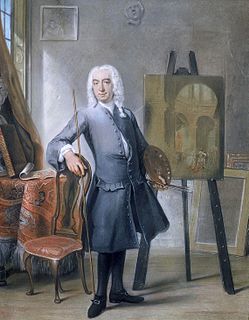
Cornelis Troost was an 18th-century actor and painter from Amsterdam.
Nicolaas Bidloo was a Dutch physician who served as the personal physician of Tsar Peter I of Russia. Bidloo was the director of the first hospital in Russia as well as the first medical school in Russia, and is considered one of the founders of Russian medicine.
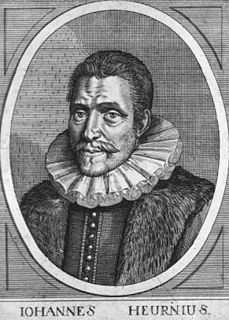
Johannes Heurnius was a Dutch physician and natural philosopher.
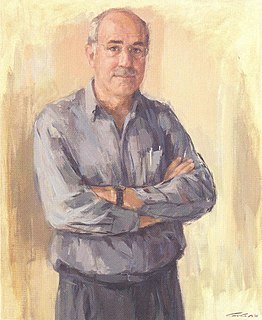
Pieter Baas is a Dutch botanist. He is an emeritus professor of plant systematics at Leiden University. He served as director of the Rijksherbarium of Leiden University between 1991 and 1999. When the institute was faced with budget cuts in 1993 he managed to preserve the collection by joining it with the university collections of Wageningen and Utrecht. This led to the founding of the National Herbarium of the Netherlands in 1999. Baas subsequently became director of the institute and served until 2005. As a botanist Baas specializes in wood anatomy.
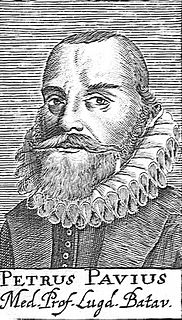
Pieter Pauw, was a Dutch botanist and anatomist. He was a student of Hieronymus Fabricius. He was the first Anatomy Professor at University of Leiden.



















